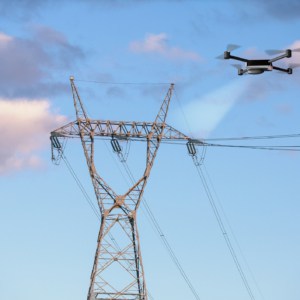If only managing stockpiles were as easy as managing warehouse inventory.
In warehouses, everything is boxed up and neatly coded, so auditing your inventory is a breeze.
When your inventory is a pile of coal, iron ore or aggregates of different degrees of coarseness, measurement is a massive challenge. There’s the geometric challenge of measuring the volume of a pile. There are the environmental challenges such as torrential rains. And there is the problem of having your stockpiles mix, which at scale can create problems measured in the tens of thousands of dollars.
Then, even if you have these risks under control, there’s the matter of turning those measurements into reliable business intelligence. “Historically, corporate finance and auditors have received the results of an inventory count in a spreadsheet without assurances that risks to the count have been minimized,” the team at Rock Products explains.
This, above all, is the most compelling reason any site manager should consider hiring professional teams to measure their stockpiles. Their own team has their hands full with management of the piles and with operations. Handing the actual measurement off to professional surveyors ensures the kind of accurate numbers that translate into real business intelligence.
Here’s why.
What Makes Stockpile Measurement Especially Difficult
Vulcan Materials gave a helpful presentation a few years ago at the Plantmix Asphalt Industry of Kentucky’s winter conference that outlines what makes materials stockpiles, particularly aggregates, difficult to measure at any size:
- Stockpiles can intermix if they aren’t properly separated.
- Unwanted material such as debris or even vegetation can contaminate the pile
- The stockpiled material can degrade and break down over time.
- Materials of different particle sizes naturally segregate over time.
Then, there are acts that simply fall under the umbrella of force majeure, as Reno’s Regional Transportation Commission found. In early 2017, local journalists Anjeanette Damon and Seth A. Richardson reported that a dozen stockpiles at one of the commission’s projects had been breached by flood waters, spilling soil that contained mercury into the nearby community.
“But [Regional Transportation Commission] argue that the mercury-containing soil would have been an issue in a flood event regardless of whether it had been stockpiled and said it could have been worse had the dirt not been stored in one place,” Damon and Richardson wrote.
In other words, site managers have a lot on their plates already. Folding accurate stockpile measurements into the mix is a tall order.
Until Recently, Stockpile Measurement Was an Imprecise Science
Most worksites have someone who can eyeball a stockpile of gravel or soil and ballpark its tonnage. And they’re pretty accurate, too, all things told. Pen-and-paper measurements get you a bit closer, but still in the realm of “pretty accurate.”
But while “pretty accurate” might be sufficient for a site’s operations, it’s insufficient for business intelligence, where a measurement that’s a ton or so off translates to thousands of dollars. Complicating matters are the shape and size of a given pile, both of which affect measurements.
“The volume of a pile is often calculated by taking several width and height measurements and recording the results on paper,” Jackson Beighle writes at Elecdata. “The amount of guess work and number of measurements depends on how irregular the shape. The repeatability is normally acceptable but it can be difficult to achieve good accuracy if the pile has a lot of peaks and valleys.”
Further, as we pointed out in a previous post: “Many (if not most) surveyors either ignore the irregularities on the top of the pile or simply take a few representative points and interpolate between them. The conventional technique of going around the pile with a measurement wheel and approximating the angle and height of the pile is a common example.”
Imprecise methods of measurement can thus create errors in apparent volume. That means some corrections have to be made and stats must be juked a little from one inventory to the next.
But there is one other, even bigger problem with manual measurement methods.
Manual Measurement Creates Safety Problems
It’s one thing to survey a pile from the ground and risk imprecise measurements. It’s another thing entirely for someone to walk the pile to get a better gauge of its contours and contents.
“Hiring a surveyor to walk a pile collecting topo points can be costly, dangerous, and you may not get your data back for a few days,” Chase Fly points out at Elecdata.
Different states might have different safety regulations, the team at Renishaw points out, but a goal everyone can agree on is to keep surveyors off of piles.
Technology such as drones and lidar mapping does just that. “Laser scanning eliminates the need for anyone to walk on a storage pile and can, in the case of mobile scanning, keep the survey crew safely inside a vehicle,” the team at Aggregates Manager writes. “When the project requires the use of a tripod-mounted scanner, the survey crew generally has the flexibility to select locations that are not in harm’s way.”
3 Ways Stockpile Measurement Pros Will Make Your Work Easier
If you don’t have your own commercial drones or lidar 3D mapping technology in house, you’re stuck with old school methods of stockpile measurement.
Here’s how hiring that work out will save you time, energy and money:
They will turn your piles of inventory into accurate business intelligence
The combination of aerial surveillance and 3D area mapping makes stockpile measurement much more precise than it was just a few years ago. As Drone Compares points out, companies like Datumate in Israel are getting consistent measurements with drone photogrammetry that are accurate to between 3 and 5 centimeters.
With that kind of accuracy, you have numbers that you can reliably plug into financial models so your company can make data-driven business decisions.
They can help keep your team safe
The Mine Safety and Health Administration reports that in 2015, there were seven accidents involving dozers and stockpiles — most of which involved the dozer falling into a cavity that was hidden by what appeared to be a sturdy surface.
Remote surveillance technology doesn’t eliminate the problem of dangerous stockpiles, but it does keep your team from having to climb unnecessarily on top of one.
They get the job done faster
The team at DroneDeploy has an excellent interview with Dallas VanZanten, owner of aerial mapping company Skymedia Northwest, who discusses the efficiencies that drone surveillance can create at a worksite. VanZanten specifically mentions a 30-acre site that would take a full day for ground-based surveyors to measure. With a drone, he estimates the job would get done in a half hour — and for about half the cost.
images by: ©cbpix/123RF Stock Photo, ©sopotniccy/123RF Stock Photo, ©photollurg / 123RF Stock Photo

